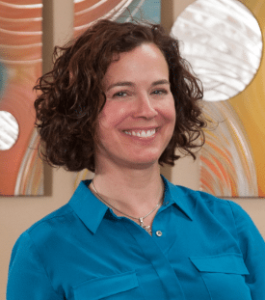The Paradox of choice
April 15, 2015By Leslie Pitner, DDS
Americans love freedom of choice — having options and keeping our options open. We believe more choices add to our happiness.
But what if it isn’t true that more choices make us happier? In the traditional view presented by economists, people are rational actors who strive to make logical decisions based on their best interests. According to this model, having more options leads to better decisions. But you only need to live a few hours around real people to know that humans are more complex and unpredictable than the rational model suggests — they don’t always make logical decisions, or choose according their true interests.
Enter researchers in the field of psychology, who decided break down how real human beings react to having more options. One well-known experiment tested choice with grocery shoppers. At a gourmet market, Dr. Sheena Iyengar set up a display of jams and every few hours changed the number of jams displayed from six to twenty-four. More shoppers stopped by the larger display of jams, but only three percent of shoppers bought a jar of jam. Of those who stopped by the smaller display of jams, thirty percent bought a jar — a ten-fold increase over the larger display!
Next, Dr. Iyengar moved from a simple condiment for toast to a more complex choice — whether and how to invest in a 401(k) plan at work. She surveyed over 800,000 Americans from 650 employers and found that when a plan offered more fund options, fewer people chose to participate at all. She described this phenomenon as “choice overload” — having too many options paralyzed people and led them to choose not to choose.
So what does this mean for you and me? Dr. Barry Schwartz, a psychologist at Swarthmore College (and author of the bestselling book, The Paradox of Choice: Why More Is Less) says we need realize that more options are NOT automatically better for us. Rather than digging and brainstorming and mulling over endless possibilities (a stressful form of procrastination), instead we need to take steps to narrow our choices wisely.
But our current culture can make decisive choosing more challenging. For example, our connections to other people through social media have given birth to the phenomenon known as FOMO (Fear of Missing Out). There is nothing like seeing the curated life of someone else selectively displayed through Facebook or Instagram to make us question the choices we have made. In situations like this, realize that life is much less about making the perfect choice and much more about making a choice that’s right for you, committing to it, making the best of it, and not comparing your choice to someone else’s. Social comparison when it comes to decision-making is a fool’s game: you only know the reality of your life; you don’t know the truth or illusion of someone else’s choices.
I’m sure you know some people who agonize over choosing a new car or where to go on vacation and those who quickly choose and move on. Dr. Schwartz has found two types of decision makers. Those who make lists and agonize over pros and cons are called “maximizers.” Maximizers want a feeling of total control and knowledge in their process. They often make good decisions, but just as often fail to find a sense of peace about their choices because, truly, it is impossible to weigh every option under the sun. On the other hand, people known as “satisficers” would rather make a fairly quick decision that meets basic criteria and then move forward. Ultimately they tend to be much happier with the decisions they make because they forego experiencing doubt and regret.
Learning how to limit choices can also work well when you are dealing with the choices of others. Think of the meltdown a child can have when faced with a huge range of ice cream flavors. Giving a child a simpler choice between two flavors makes things easier for both child and parent. This sort of thinking also works with clients and colleagues. Next time you are scheduling an appointment with someone, try giving them a choice of only two meeting times. You may find the decision process becomes much quicker and easier.
We are fortunate in the United States to live surrounded by so much freedom of choice. Yet the U.S. has among the highest rates of depression and anxiety disorders in the world, while much poorer nations — places where people experience less choice — have lower rates of these maladies. Doesn’t that seem odd? It does until you understand the paradoxes of choice.
Iyengar, Sheena. 2010. The art of choosing. New York: Twelve.
Schwartz, Barry. 2004. The paradox of choice: why more is less. New York: Ecco.
About Dr. Leslie Pitner
Dr. Pitner has built a reputation as one of the most innovative orthodontists in the Southeast. Her practice, Pitner Orthodontics, serves the Columbia and Chapin communities, but she has patients coming from all over the US. Leslie Pitner majored in art and received her undergraduate degree from Williams College in 1990. She completed her master’s degree in art history at the University of Pennsylvania in 1995. She then attended the University of North Carolina School of Dentistry and graduated with honors. Her training in art directly translates to her orthodontic practice by allowing her to utilize her eye for beauty and detail and bring that passion to each patient’s smile.
While in practice, Dr. Pitner completed a unique master’s degree program in positive psychology at the University of Pennsylvania. She uses this element of her education to encourage patients to grow in their strengths through the challenges of orthodontics and enjoy the positive power of a smile. Dr. Pitner has broad interests from traveling and public speaking to driving her own race-car. www.drpitner.com
.



















